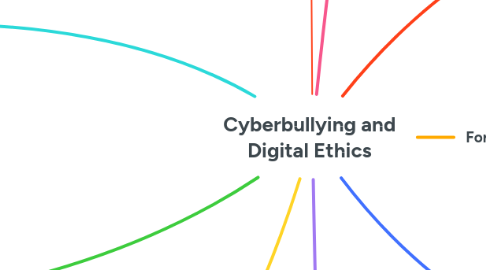Cyberbullying and Digital Ethics
by Shaun Ley


1. Definition
1.1. “Cyberbullying is cruel to others by sending or posting harmful material or engaging in other forms of social aggression using the Internet or other digital technologies” (Willard, 2007, p. 1).
1.2. “[a]n aggressive, intentional act carried out by a group or individual, using electronic forms of contact, repeatedly and over time against a victim who cannot easily defend him or herself” (Smith et al., 2008, p. 376).
1.3. “Cyberbullying involves the use of information and communication technologies to support deliberate, repeated, and hostile behaviour by an individual or group, which is intended to harm others” (Belsey, 2014, p. 1).
1.4. “willful and repeated harm inflicted through the use of computers, cell phones, and other electronic devices” (Hinduja, 2010, p. 615).
2. Effects
2.1. reduced academic achievement
2.2. Lowered school attendance and increased truancy
2.3. Embarassment
2.4. Fear, anger and frustration
2.5. Substance use
2.6. Stress, anxiety, depression
2.7. Suicide
2.8. Low self esteem, reduced confidence
2.9. withdrawal from social situations
3. Aims
3.1. Digital Citizenship
3.2. Cyber security
3.3. Cyber safety
3.4. Encouraging the safe and responsible use of technology
3.5. Ethical use
3.6. Morals
3.7. Privacy
3.8. Respectful both online and off
3.9. Digital wellbeing
3.10. Global community
3.11. Digital equality
3.12. Digital literacy
4. Pre service
4.1. Education
4.2. Mediation
4.3. Professional Development
4.4. Ability to identify and manage
4.5. Self efficacy
4.6. Awareness of intervention strategies
4.7. Acknowledge that teachers are well placed to be the link in cyberbullying circumstances even if they happen outside of school
5. Strategies
5.1. Collaboration between parents and the community
5.2. Across the curriculum implementation
5.3. Surveys for awareness and data collection
5.4. Evaluation
5.5. Emotional support for the victim and perpetrators in the form of counselling.
5.6. Monitoring student online behaviour
5.7. Encourage reporting amongst students
5.8. Reintegration
6. Forms
6.1. Texting
6.2. Social media comments
6.3. Posting unwanted pictures online
6.4. Emails
7. Resources for Stage 4 and 5
7.1. https://www.commonsense.org/education/digital-citizenship/lesson/what-you-send-in-that-moment-when
7.2. https://www.commonsense.org/education/digital-citizenship/lesson/countering-hate-speech-online
7.3. https://www.commonsense.org/education/digital-citizenship/lesson/online-disinhibition-and-cyberbullying
7.4. https://www.commonsense.org/education/digital-citizenship/lesson/the-consequences-of-online-hate-speech
8. Policies and Guidelines
8.1. The Australian National Teaching Standards
8.1.1. Standard 4.4 Describe strategies that support students’ wellbeing and safety working within school and/or system, curriculum and legislative requirements.
8.1.2. Standard 4.5 Demonstrate an understanding of the relevant issues and the strategies available to support the safe, responsible and ethical use of ICT in learning and teaching.
